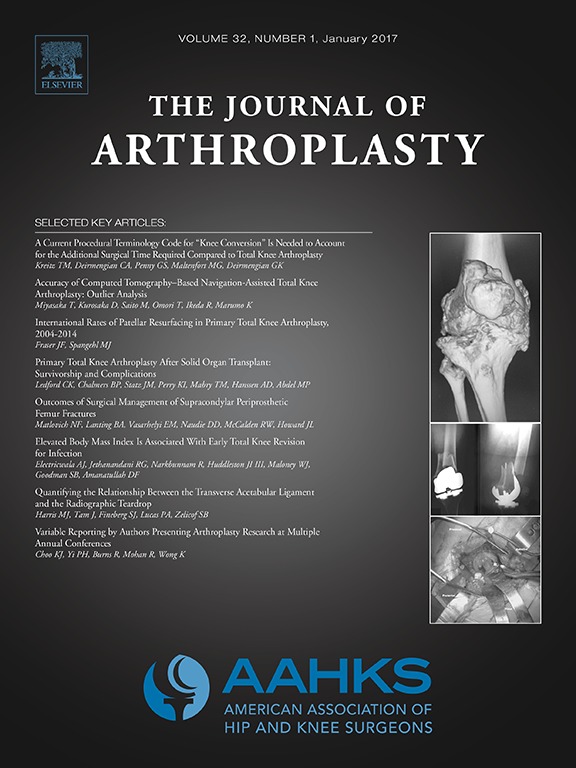
ARTHROPLASTY
More accurate anteversion of acetubular components placed with patient-specific guides
J Arthroplasty. 2014 May;29(5):1030-7. doi: 10.1016/j.arth.2013.10.006. Epub 2013 Oct 1636 patients undergoing total hip arthroplasty were randomized to undergo acetabular component placement using either patient-specific instrumentation (PSI) or standard mechanical guides. The purpose was to evaluate whether the use of PSIs resulted in more accurate positioning of the acetabular cup with respect to preoperative planned angles of anteversion and abduction. CT assessment postoperatively demonstrated more accurate positioning of the acetabular component with respect anteversion, although no significant differences between groups were noted in abduction. Effect of PSI on anteversion was more pronounced when the posterior surgical approach was used as opposed to the direct lateral approach.
Unlock the full ACE Report
You have access to {0} free articles per month.Click below to unlock and view this {1}
Unlock NowCritical appraisals of the latest, high-impact randomized controlled trials and systematic reviews in orthopaedics
Access to OrthoEvidence podcast content, including collaborations with the Journal of Bone and Joint Surgery, interviews with internationally recognized surgeons, and roundtable discussions on orthopaedic news and topics
Subscription to The Pulse, a twice-weekly evidence-based newsletter designed to help you make better clinical decisions
Exclusive access to original content articles, including in-house systematic reviews, and articles on health research methods and hot orthopaedic topics
Or upgrade today and gain access to all OrthoEvidence content for just $1.99 per week.
Already have an account? Log in


Subscribe to "The Pulse"
Evidence-Based Orthopaedics direct to your inbox.
{0} of {1} free articles
Become an OrthoEvidence Premium Member. Expand your perspective with high-quality evidence.
Upgrade Now












































































